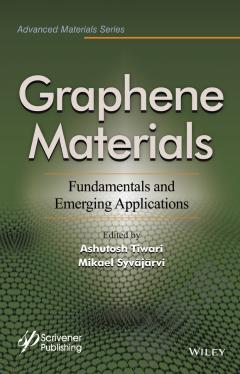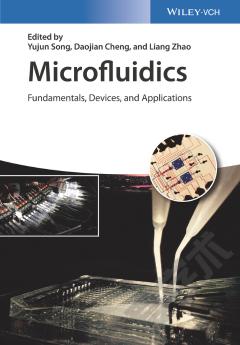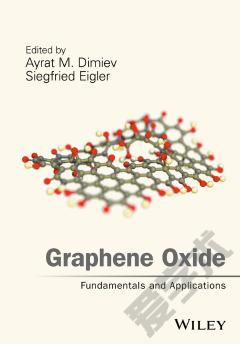Graphene —— Fundamentals, Devices, and Applications
----- 石墨烯:基础知识,设备和应用程序
INTRODUCTION Chiral fermions in graphene Low-energy electron excitations in graphene Dirac equation for chiral fermions Berry phase and topological singularity in graphene Klein paradox and chiral tunneling Landau levels in graphene Modeling the graphene devices INTRINSIC COHERENCE OF GRAPHENE The field-biased graphene junctions Electron and hole excitations in graphene Quantum capacitance of graphene Einstein relation in graphene Electrostatics of gated graphene devices: charge traps near the graphene/oxide interface Steady-state electrostatics of graphene field-effect transistors Characteristic scales of gated graphene Solving the electrostatic equation Capacitance of the channel and of the gate Diffusion-drift current ratio of the diffusion and drift currents Continuity of electric current Inhomogeneous behavior of chemical and electrostatic potential along the channel Microscopic model of electron transport through the field-effect transistor Conventional tunneling via a rectangular barrier Chiral tunneling through a rectangular barrier Role of edges: armchair edges Role of edges: zigzag edges Deviation of an electron inside a wide chiral barrier Electric current density across the chiral barrier Gate voltage-controlled quantization A hybrid graphene-CNT junction Electric current characteristics The saturation regime (pinch-off) Linear behavior in low fields Transit time through the channel The diffusion-drift approximation Effects in the high field Generalized boundary conditions Pseudo-diffusive dynamics Confinement and Zitterbewegung QUANTIZED STATES IN GRAPHENE RIBBONS Tight-binding model of bilayer graphene A bilayer graphene junction Heavy chiral fermion state in graphene stripe 3.4. Quantum-confined Stark effect PT-invariance the Dirac Hamiltonian Heavy chiral fermions at zigzag edges of graphene stripe PHONONS AND RAMAN SCATTERING IN GRAPHENE Phonon modes in the two-dimensional graphene Phonon spectra in graphene, and graphene nanoribbons The phonon transport in two-dimensional crystals Momentum diagram of phonon transport in graphene Thermal conductivity due to phonons in graphene nanoribbons Raman scattering Role the degrees of freedom Molecular vibrations and infrared radiation Various processes of light scattering Stokes and anti-Stokes scattering Raman scattering versus fluorescence Selection rules for Raman scattering Raman amplification and Stimulated Raman scattering A requirement of the coherence Practical applications Higher-order Raman spectra Raman spectroscopy of graphene Kohn anomalies, double resonance, and D and G peaks Deriving the electron-phonon coupling from Raman line width Raman spectroscopy of graphene and graphene layers Failure the adiabatic Born-Oppenheimer approximation and the Raman spectrum of doped graphene Influence of the atomic and structural disorders Graphene ribbons and edges ELECTRON SCATTERING ON ATOMIC DEFECTS AND PHONONS IN GRAPHENE Pseudospin conservation during the scattering of chiral fermions Phonon drag effect Screening by interacting electrons Plasma oscillations Plasma excitations in graphene Coupling between electrons and phonons Susceptibility of graphene Graphene Dielectric function in graphene and CNT Electron-impurity scattering time in graphene Scattering of phonons in a few-layer graphene MANY-BODY EFFECTS IN GRAPHENE Electron-electron Coulomb interaction Electron self-energy Quasi-particle excitation energy Computational results Excitons Wannier-Mott excitons Excitonic states Experimental observation of excitons in graphene Electron scattering on indirect excitons Tomonaga-Luttinger liquid Probing of intrinsic state of one-dimensional quantum well with a photon-assisted tunneling The TLL tunneling density of states of a long quantum well Identifying the charge and the spin boson energy levels Useful relationships ANDREEV REFLECTION IN GRAPHENE Graphene/superconductor interface Conversion between Electrons and holes at the N/S interface BTK model of Andreev reflection Experimental study of the Andreev reflection in graphene Interpretation of Andreev reflection in graphene-based junctions Amplitude of composite Andreev reflection Amplitude of composite Andreev reflection Van Hove singularities and superconductivity in carbon nanotubes and graphene stripes Theoretical model NON-EQUILIBRIUM EFFECTS IN GRAPHENE DEVICES Relevance of non-equilibrium effects in graphene junction Tunneling rates for a graphene junction Non-equilibrium electric current The Green Keldysh function of non-equilibrium electrons "Homogeneous" approximation inside the chiral barrier Expressions for the advanced Green functions The -function approximation Photon-assisted tunneling current through the chiral barrier Electron self-energy and many-body effects Quantum kinetic equation for Symmetric junction Non-equilibrium contribution The photon-assisted electric current Equilibrium current The gate current Excessive regular current Absorbed power Jarzynski equality for quantum systems Quantum Jarzynski equality for spin 1/2 GRAPHENE THERMOELECTRIC NANOCOOLERS AND ELECTRICITY CO-GENERATORS Thermoelectric effects on the nanoscale Performance of the thermoelectric device Quantum theory of electronic thermal transport Electron transport and elastic collisions Reversible Peltier effect in carbon nano-junctions Thermoelectric figure of merit and Fourier law Phonon transport and thermal conductivity Recent experiments for measuring the thermal conductivity of graphene Microscopic model of the thermoelectric effect Converting the heat into electricity by a graphene stripe with heavy chiral fermions Blocking the phonon flow by multilayered electrodes Molecular dynamics simulations Non-equilibrium thermal injection Perspectives of thermoelectric research for graphene SENSING AND EMISSION OF ELECTROMAGNETIC WAVES WITH GRAPHENE AND CARBON NANOTUBE QUANTUM DOTS Sensors of electromagnetic field THz sensor based on carbon nanotube quantum dot Microscopic model of the carbon nanotube quantum dot sensor Electromagnetic field influence Key assumptions Electron quantization in the steady state The THz field influence to quantum dot Characteristics of the electric transport Responsivity and quantum efficiency of the THz detector Intrinsic noise and the noise equivalent power Frequency range and operation temperature OTHER ATOMIC MONOLAYERS Atomic monolayers Monolayer and a few-layered materials Electric transport in nanodevices Electronic transport versus scattering mechanisms TMDC transistors Perspectives of the TMDC electronics Vibrational and optical properties of TMDCs The future applications of 2D materials
{{comment.content}}








 京公网安备 11010802027623号
京公网安备 11010802027623号